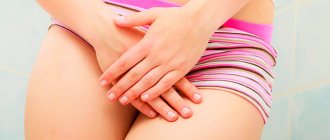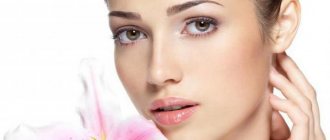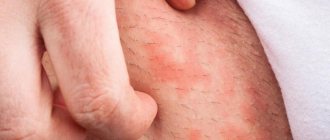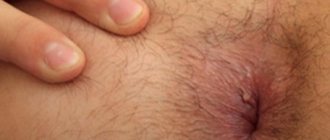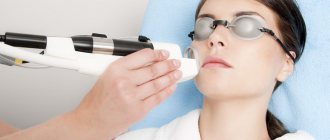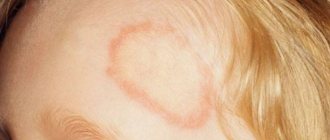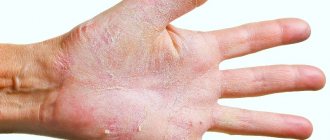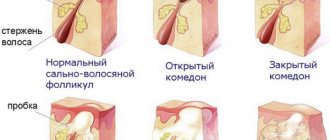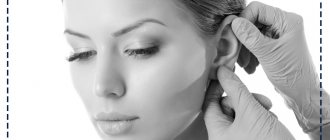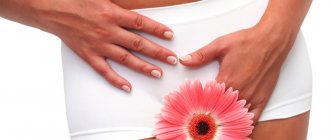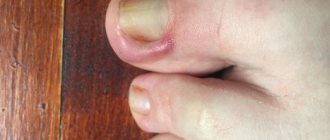Mild itching in the area of the ear canal and pinna is common and often goes away on its own and does not attract much attention. It’s a completely different matter when the ear itches and flakes inside, and similar sensations arise again and again. These manifestations are no longer considered physiological, so you should not brush them aside and consider them trivial; the problem must be dealt with as soon as possible.
What is the cause of flaking and itching in the ears?
Carefully examine the ear, neck, and scalp using two mirrors. Are there any changes on the skin? Think about how often you use ear sticks. Perhaps it’s a matter of excessive zeal for absolute cleanliness in the interior. The fact is that often the toilet of the external auditory canals is performed completely incorrectly. Some people use cotton swabs to injure the tissues of the ear and, in addition, push the natural secretions that accumulate outside into the inside, and each time compact the layers of sulfur. Another important symptom that indicates a wax plug is frequent congestion of the ear canal for no reason. Of course, this is far from the only factor causing such unpleasant phenomena. If you are concerned about itching and flaking in the ears, we will consider in detail what the causes and treatment may be.
Allergy
The first thing you might think of when you notice the above symptoms is that an allergy has occurred. A person often does not even suspect that discomfort has arisen due to contact with completely harmless things. For example it could be:
- new hair dye that has come into contact with the skin of the ear,
- vacuum headphones in which you watched a movie for half the evening yesterday,
- glasses whose arms touch the auricle,
- costume jewelry, namely earrings.
Dermatitis
When this disease occurs, the outside of the ear itches and flakes, and turns red. The localization of the source of inflammation, however, can be internal, as well as behind the auricle. In addition to these symptoms, others also appear:
- bubbles with transparent contents swell and often burst,
- yellow scabs may appear,
- pus is released and a putrid odor appears.
Eczema
Discomfort can occur both inside and outside the ear. The following symptoms will help you recognize the pathology:
- dry skin, appearance of scales,
- severe redness, swelling,
- the appearance of a rash, the fractions of which, when opened, form weeping areas of the skin,
- The ears become unbearably itchy and flaky, and an intense burning sensation is often disturbing.
Fungus
Most often, mycotic infection occurs due to fungi from the genus Candida. As a rule, the lesion occurs only on one ear; the probability of bilateral infection is no more than 10%. If you notice the symptoms outlined below, immediately go to a dermatologist. The mycelium of the fungus can quickly grow deep into the skin, causing tissue injury and pathological release of enzymes. Symptoms in acute form:
- severe swelling,
- the ears are itchy and flaky, congestion often occurs,
- gray-black, green-yellow, gray discharge appears (depending on the causative agent of the infection),
- sharp pain, especially when swallowing or shaving.
Other possible diseases
Some chronic diseases during the period of relapse can indirectly affect the hearing organs. In this case, not only itching and peeling of the integument of the ear is observed, but also drying out of the epidermis and its redness. In some cases, degenerative processes become so aggravated that microcracks appear that can bleed. Such pathologies include: liver disease, diabetes, otitis media.
Often the inside of the ears itch and peel off due to the development of purulent inflammation of the hair follicle or sebaceous gland. This pathology is called otitis externa. As a result of tissue infection by pathogenic microflora, a boil forms. The affected area hurts greatly, general well-being is disturbed, and a headache may appear. The pus accumulated inside the pustule breaks through the surface layer of the skin and flows out along with the necrotic core.
Treatment of the disease
Each disease has different treatment features. It is important to eliminate microorganisms that contribute to peeling. With external otitis, boils, there is purulent discharge, there is hearing loss, and congestion.
The best way in this case is the intervention of a surgeon, who, under anesthesia, removes the pus and disinfects the ear canal. Antibacterial agents are prescribed.
Peeling in the ears often occurs as a result of stress and poor nutrition. Dry skin also becomes a source of unpleasant consequences. In this case, you need to start eating properly, getting enough sleep (at least 7 hours a day), and building a daily routine so that you have time to rest. Determine which creams will help improve the condition of the skin.
Improper metabolism is sometimes accompanied by peeling of the ears. Skin type affects your susceptibility to diseases. If you have oily skin, you need to wash it as often as possible to remove excess secretions. Prevention involves choosing shampoo, changing your diet, and using the right cosmetics.
Traditional methods
The advice that has been passed down to us as a heritage from our ancestors can also contribute to a quicker cure for various diseases that lead to the symptoms in question.
- Apple cider vinegar helps with ear fungus. It is used to dry the skin and destroy mycelium. Take a cotton pad, soak it in the liquid and wipe all affected areas. Do not bury it inside under any circumstances!
- A decoction of dry celandine herb will also help in the fight for health. You need to prepare 200 ml of water and 1 tsp. plants, combine everything and bring to a boil over low heat, or even better in a water bath. The decoction can only be used if the eardrum is not damaged. Children should not use this product.
- For eczema, one of the most effective remedies from traditional healers is St. John's wort oil. You can do it yourself. So: Collect only the flowers of the plant.
- Place in a container, compacting tightly.
- Fill with oil. Any neutral will do, even sunflower.
- Place on the sunny side of the window for 2-3 weeks.
- Shake the jar from time to time.
- The result is a concentrated oil that can be used successfully for other diseases.
Treatment at home
In the absence of fungal and inflammatory processes, it is possible to treat peeling on your own. A sterile swab is moistened in vegetable oil and inserted into the ear for 10 minutes. The remaining scales can be easily removed with a piece of gauze. The procedure is repeated every 2 days for 2 weeks.
You can use a decoction of medicinal herbs, such as chamomile. Add 2 tbsp to 1 glass of boiled water. spoons of dry leaves. Soak the swab in the solution and insert it into the ear for 10 minutes.
If you follow preventive measures, such as wearing a hat in cold weather, following the correct daily routine, regularly taking the required vitamins, and proper hygiene, peeling in the ears will not occur.
Reasons for appearance
The main reason is the activity of the fungus Pityrosporum. It begins to actively develop and multiply due to disruptions in the functioning of the sebaceous glands. Other causes of white or yellowish skin flakes include:
- lack of vitamins and microelements;
- disruption of metabolic processes in the body;
- skin diseases (psoriasis, dermatitis);
- gastrointestinal diseases;
- hormonal disorders (imbalance);
- otitis and furunculosis.
The list of reasons that cause dandruff in the ears is quite extensive. Only a doctor can identify a specific provoking factor after a thorough diagnosis. Only by determining the root cause of the disease can adequate treatment be prescribed.
Treatment
Typically, dandruff in the ears is a result of poor hearing hygiene. Before looking for the deeper causes of seborrhea, you need to take better care of your body.
To make a diagnosis, an examination is carried out by an otolaryngologist. He asks in detail about the existing symptoms and examines the ear area. A swab is taken from the ear canal to test for infection. A person is sent for a general and biochemical blood test if there is a suspicion of a metabolic disorder in the body.
Treatment should be carried out in combination. The main thing in this matter is not to retreat.
First, you can try to remove the scales using baby soap. Lather it on a washcloth and thoroughly wash areas with visible peeling. Then wash everything off with warm water. Use a cotton swab to rinse the external auditory canal. After washing, the ears are dried with a cotton cloth and lubricated with a cream with a moisturizing effect.
If it is not possible to get rid of dandruff in the ears in this way, you need to consult a doctor who will no longer prescribe cosmetic elimination of the unpleasant defect, but restoration of the functioning of individual organs and systems.
Doctors prescribe antibacterial drugs if severe inflammation or otitis media develops. These can be drops of Otofa and Otipax. If its appearance is associated with exposure to an allergen, antihistamines are prescribed. To eliminate a fungal or allergic agent, Candibiotic (ear drops) is prescribed. They treat the skin or soak a cotton swab and place it in the ear canal.
Types of dermatitis of different nature
Peeling in the ears is one of the main causes of many skin diseases. However, the treatment of each of them must be specific, with appropriate medications.
Psoriasis
One of these diseases is psoriasis, which affects the surface of the skin. Red nodules appear on it, which are covered with white scales.
At first these nodules are small, and then they become large, forming plaques.
In mild cases, the disease is treated with ultraviolet rays. If complications arise, then proceed to systemic treatment. You need to follow a diet.
In severe cases, corticosteroid drugs and cytostatics are used.
Neurodermatitis
Another chronic skin disease is neurodermatitis. This disease manifests itself with severe itching and rash. The affected areas peel and become red.
In the advanced stage of the disease, the skin darkens, blisters appear on it, leaving behind a dried crust. Very strong itching irritates a person and the patient scratches himself.
Neurodermatitis affects the lymph nodes, which is very dangerous for humans.
The disease is treated with diet, the use of ointments and antihistamines, along with them it is necessary to take medications for the normal functioning of the digestive organs, sedatives, vitamins and immunomodulators.
In addition, it is necessary to avoid heavy physical activity, stress, increase immunity, fight depression and maintain a daily routine.
Eczema
Eczema is a skin disease characterized by erythematous-vesicular itchy rashes.
Eczema is treated with hormonal, antifungal and antibacterial ointments.
Seborrheic dermatitis
Seborrheic dermatitis is another infectious and inflammatory disease that affects areas of the skin with a large number of fatty glands.
The disease is caused by yeast-like lipophilic fungi that live on human skin and feed on the secretions of the fatty glands.
Seborrheic dermatitis needs to be treated comprehensively:
- first you need to boost your immunity;
- normalize the functioning of the gastrointestinal tract;
- carry out sanitation of foci of chronic infection;
- carry out local treatment using shampoo based on zinc, tar and selenium with the addition of 2% ketoconazole.
Main symptoms
Usually, when dandruff appears in the ear, we can talk about a malfunction of the sebaceous glands, which secrete too much or too little skin secretion. As a result, dead epidermal cells appear, which can be dry or oily.
The external manifestations of seborrhea are difficult to miss. Whitish or yellowish skin scales appear on the ears, inside and around them. If ear dandruff appears due to a fungal infection, the peeling of the skin becomes more noticeable, it peels off forcibly, whereas during normal renewal of the epidermis layer, the keratinized cells fall off unnoticed.
In the presence of an infectious nature, the following symptoms appear:
- severe peeling of the skin in the ears;
- the appearance of wet crusts;
- burning, unpleasant itching, dryness in the ear canal.
Some people confuse dandruff with simple flaking of the skin. As a result, incorrect treatment may be carried out. In order to avoid mistakes, you need to contact a dermatologist or trichologist for consultation.
